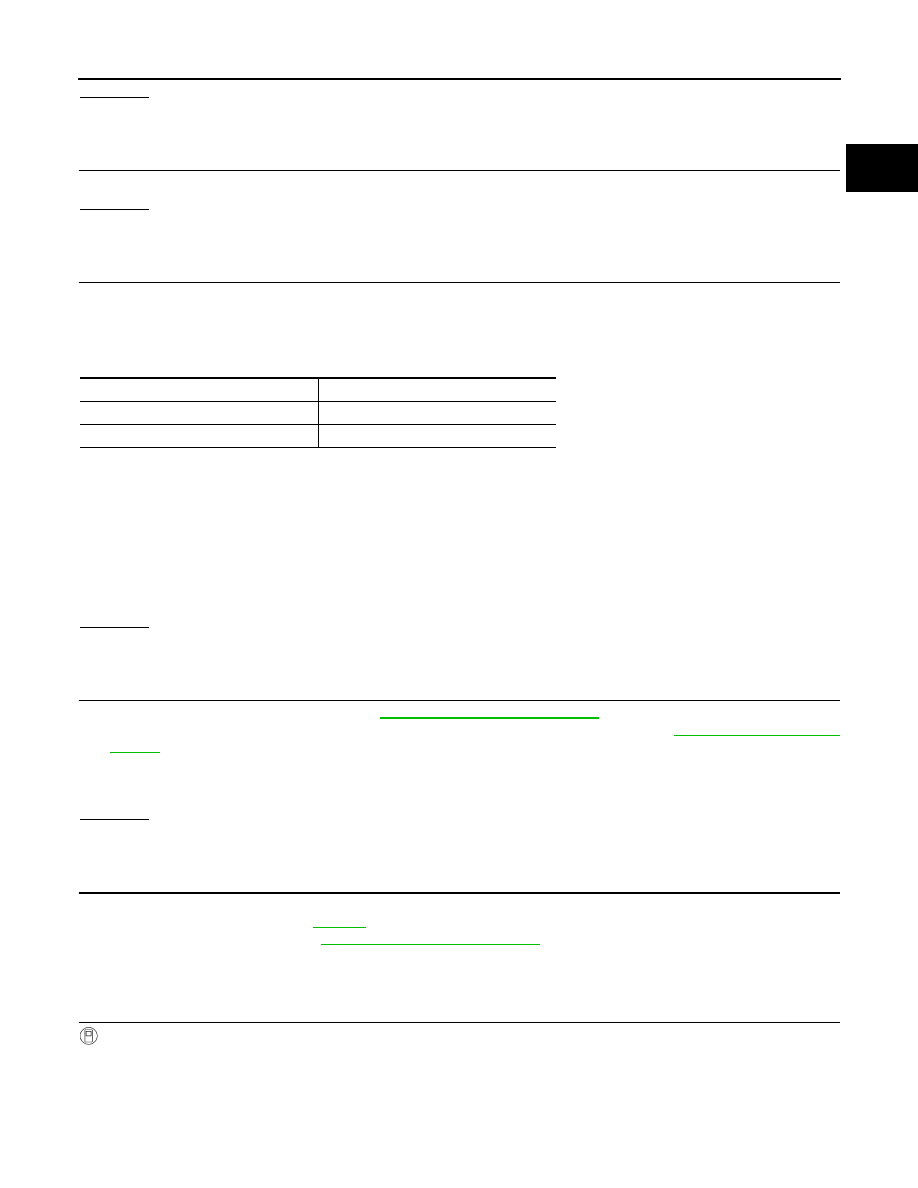Nissan Frontier. Manual - part 416

P0172 FUEL INJECTION SYSTEM FUNCTION
EC-235
< DTC/CIRCUIT DIAGNOSIS >
[QR25DE]
C
D
E
F
G
H
I
J
K
L
M
A
EC
N
P
O
OK or NG
OK
>> GO TO 2.
NG
>> Repair or replace.
2.
CHECK FOR INTAKE AIR LEAK
Listen for an intake air leak after the mass air flow sensor.
OK or NG
OK
>> GO TO 3.
NG
>> Repair or replace.
3.
CHECK AIR FUEL RATIO (A/F) SENSOR 1 CIRCUIT FOR OPEN AND SHORT
1. Turn ignition switch OFF.
2. Disconnect A/F sensor 1 harness connector and ECM harness connector.
3. Check harness continuity between ECM terminals and A/F sensor 1 terminals as follows.
Refer to Wiring Diagram.
4. Check harness continuity between ECM terminals 45, 49 and ground, or A/F sensor 1 terminals 1, 2 and
ground.
Refer to Wiring Diagram.
5. Also check harness for short to power.
OK or NG
OK
>> GO TO 4.
NG
>> Repair open circuit, short to ground or short to power in harness or connectors.
4.
CHECK FUEL PRESSURE
1. Release fuel pressure to zero. Refer to
.
2. Install fuel pressure gauge kit [SST (J-44321)] and check fuel pressure. Refer to
.
OK or NG
OK
>> GO TO 6.
NG
>> GO TO 5.
5.
DETECT MALFUNCTIONING PART
Check the following.
• Fuel pump and circuit (Refer to
.)
• Fuel pressure regulator (Refer to
.)
>> Repair or replace.
6.
CHECK MASS AIR FLOW SENSOR
With CONSULT
1. Install all removed parts.
2. Check “MASS AIR FLOW” in “DATA MONITOR” mode with CONSULT.
A/F sensor 1
ECM terminal
1
45
2
49
Continuity should exist.
Continuity should not exist.
At idling: Approximately 350 kPa (3.57 kg/cm
2
, 51 psi)
At idling
: 1.0- 4.0 g/s
At 2,500 rpm
: 4.0 - 12.0 g/s